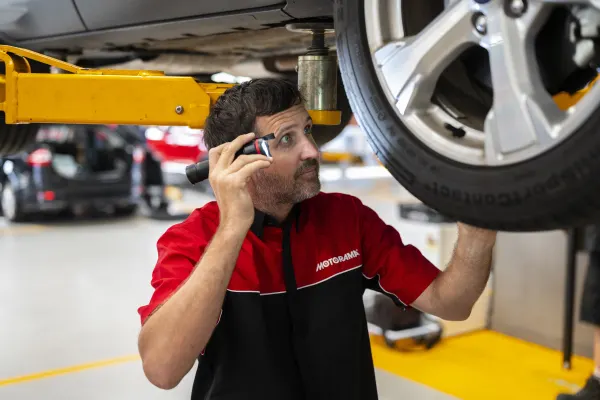
How To Do A Basic Self-Service On Your Car
Posted in Servicing Insights
How To Do A Basic Self-Service On Your Car
With ever increasing service intervals in new cars – most are out to 15,000kms or six months – it is imperative that you as a new car owner do your best to keep your car in tip top shape.
That’s an awful lot of driving and a lot of stress to be put on your car, particularly if the driving involves the daily peak hour grind or a high number of short trips.
Here are three simple monthly checks absolutely anyone can do in less than five minutes so as to ensure the smooth operation of their car and keep yourself on the road between scheduled services.
Engine oil
Checking your engine oil level is one of the easiest and most important steps you can take to make sure your engine doesn’t make the trip to the great junkyard in the sky.
Here’s how to check the level and do it properly;
- Park the car on level ground after the engine has reached operating temperature, failure to do so will give you an incorrect reading and could create false alarm.
- Open the bonnet and let the car sit for at least ten minutes to ensure the oil has sufficient time to drain back to the sump.
- Your engine’s dipstick will usually have a bright yellow ring end and will be placed in an easy to reach location – find it and remove it.
- Wipe it clean of oil on a clean rag or fresh paper towel and then re-insert it into the engine for a few seconds before once again removing the dipstick, you will now have your correct oil level displayed in front of you.
- The dipstick will have at least two markings on it indicating low and full, usually characterised by an L and F or Add and Full, realistically anywhere in between these two markings is a safe operating range for the engine.
- If the level is in the top half leading to the full mark then you have a healthy oil level and nothing to worry about, however if the level is close to or below the low mark you need to add oil to the engine or risk starving the engine of oil, resulting in major engine failure.
- If it’s only been 5,000kms since your last service and the level is near the low mark there is an underlying issue at play and it’s best to call your local service centre and book the car in to get checked out ASAP.
- Lastly, make sure you insert the dipstick back properly into its housing and you’re all done!

Checking your tyres
Over time and after many kilometres, your tyres will lose a certain percentage of their air, this can negatively affect handling and braking performance on the road as well as fuel economy.
Checking your tyre pressures and the tread wear is another quick and easy maintenance procedure that anyone can do.
- Pull into a service station or somewhere there is an air hose with a gauge.
- Find your correct tyre pressures, manufacturers could list the factory pressure levels in a few different locations and they are usually on a sticker on the pillars next to the driver or passenger or in the glovebox (if not, check the owner’s manual).
- Undo the valve caps which will be poking out of the wheel one by one and inflate the tyres to the desired pressure using the hose and gauge.
Checking your tyres once every month or two could show up a badly leaking or punctured tyre, which will become a serious safety hazard. Most of the time your tyres will drop a few PSI of pressure and that’s fine, however if you’re losing more than five PSI within a month from your tyres, it’s time to get them checked.
A quick visual inspection is usually enough to see whether or not your tyres are in need of replacement.
Tyres will have rectangular wear markers in the middle of the grooves and on the outside of the tread patch, if these markers are at the same height as the rest of the tyre, it’s time for a new set of rubber.
Windscreen washer fluid
In a dirty and dusty country likeAustralia it is imperative that your windscreen is kept clear to ensureproper forward vision – your washer fluid is key to do this and should be checked and topped up monthly.
Like your engine oil, the windscreen washer fluid will usually have a brightly coloured lid but it will often have a windscreen symbol stamped onto it.
The reservoir is often located near the front of the engine compartment, behind one of the headlights (although it’s sometimes tucked back close to the windscreen). The lid will sometimes have a level tube attached that enables the amount of fluid to be checked easily. In any case, the operation is as simple as adding the correct amount of Bars Bugs or an alternative and filling the reservoir up with water, which can take more than two litres to fill.

Following these simple monthly checks will see you through to your next service interval and provide you with worry free motoring.


